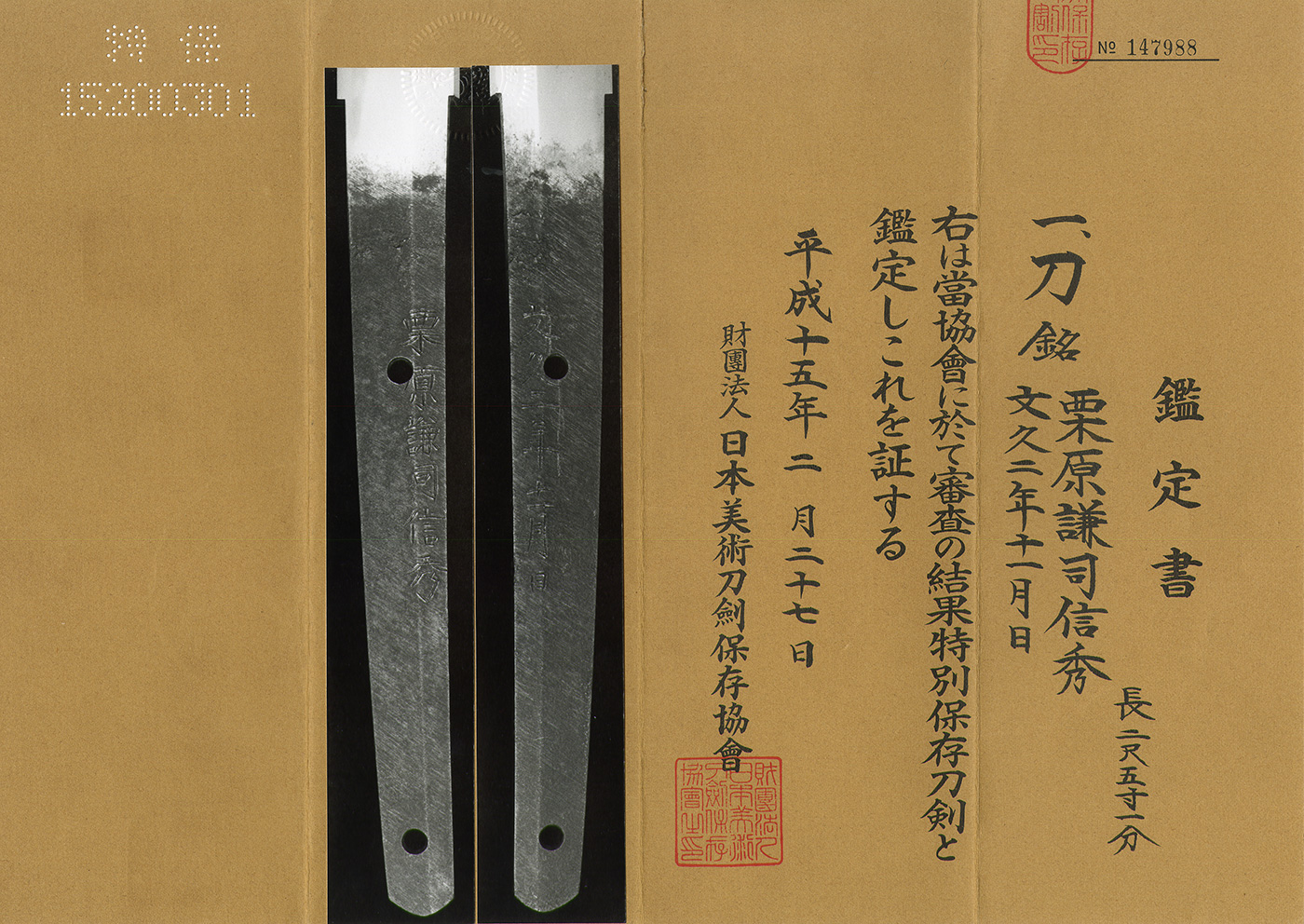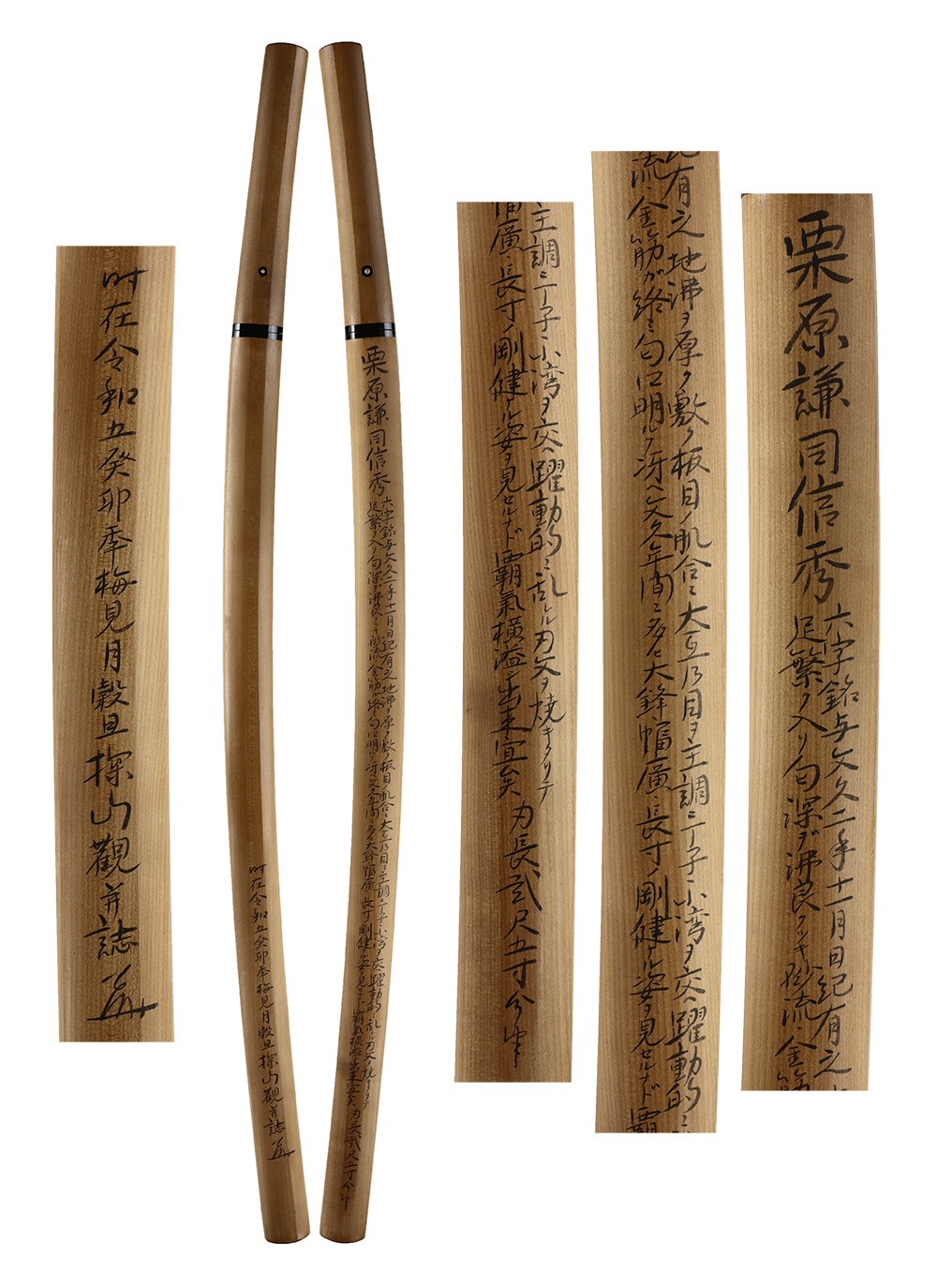Bid History
Auction has expired
Auction Expired because there were no bids|
Auction started
2025/06/22 (Sun) 12:48 |
※ = Auto
Katana in Shirasaya (NBTHK Tokubetsu Hozon Token)
Signature:
Kurihara Kenji Nobuhide 栗原謙司信秀
Bunkyu 2 Nen 11 Gatsu Hi 文久二年十一月日 (November, 1862)
Sayagaki:
Kurihara Kenji Nobuhide
The sword bears a six-character signature along with the date “November, Bunkyū 2” (1862). Thick Jinie is present on the surface, and the hada is a well-forged Itame. The hamon features a dynamic Gunome mixed with Choji and Notare with frequent Ashi, deep nioiguchi with much nie and prominent sunagashi and kinsuji intertwining through it, and nioikuchi is thick and bright. The shape exhibits the powerful, long, and wide form with an extended kissaki often seen in swords from the Bunkyū era. The blade is full of vitality and shows excellent workmanship.
Written by Tanzan in February 2023, on an auspicious day.
We divide 4 sections for each sword as Saijyo Saku, Jyojyo Saku, Jyo Saku and Regular Saku.
This work is ranked as Jyojyo Saku among the works by Kurihara Kenji Nobuhide.
Habaki: Double-layered gold-plated
Blade Length: 76.0 cm (29.92 in)
Curvature: 2.1 cm (0.83 in)
Mekugi Holes: 2
Width at Base (Motohaba): 3.33 cm (1.31 in)
Width at Tip (Sakihaba): 2.42 cm (0.95 in)
Thickness of rim (Kasane): 0.76 cm (0.30 in)
Sword Weight: 920 g
Era: the late Edo period, 1862
Shape: slightly thick blade with long tang and Ububa left.
Jigane: Itame Hada with Chikei.
Hamon: Nie base Gunome midare with Sunagashi and Kinsuji. Boshi is midare and turns back.
Features:
Kurihara Nobuhide was a swordsmith active in the late Edo period. He was born in 1815 in Echigo Province and spent approximately 20 years working in Kyoto as a metal fittings artisan from around the age of 15. He later changed professions to become a swordsmith and studied under Minamoto Kiyomaro in Edo for several years. It is presumed that his career change was influenced by the cultural climate of Kyoto, where he was likely exposed to restorationist and loyalist ideologies.
It is thought that he had already established his independence as early as around 1852. Recognized for his skill by the Tokugawa shogunate, he was engaged in official sword-forging work in places such as Uraga and Osaka, and in 1865, he was awarded the honorary title of Chikuzen no Kami. Drawing on his background as a metal fittings artisan, he excelled at blade carving.
NBTHK Tokubetsu Hozon Certificate
Aoi Art estimation paper
Whole Oshigata





Auction Expired
Auction Expired because there were no bids
Auction has expired
Auction Expired because there were no bids|
Auction started
2025/06/22 (Sun) 12:48 |
※ = Auto